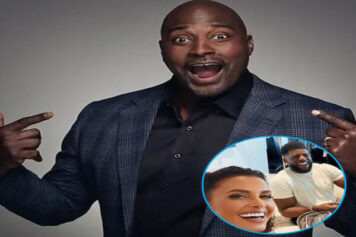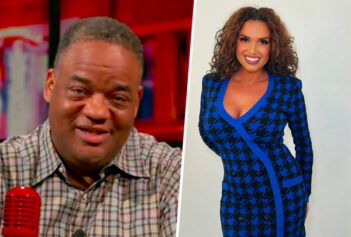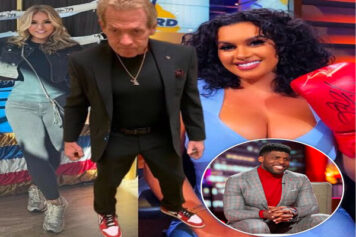The movie that changed everything for the niche culture of bodybuilding was aptly titled, “Pumping Iron.” In the groundbreaking documentary, shot during the 100 days leading up to the 1975 Mr. Olympia competition in Pretoria, South Africa, cameras followed a young and brash Arnold Schwarzenegger as he got ready to compete for bodybuilding’s most coveted crown against legendary bodybuilders like Franco Columbu, Serge Nubret and Lou Ferrigno, long before Lou Ferrigno was The Incredible Hulk Lou Ferrigno. Iron weight plates clanked, barbells were hoisted, shit was talked and muscles were pumped to the brink on the way to eye-popping Adonis physiques and the ultimate in badassdom.
That film made Schwarzenegger a seven-time Mr. Olympia, a sports icon, prompting many buck-80-weighing bodybuilder-wannabes to flock to the local gym, in hopes of eventually looking like his favorite muscle-bound hero. Because why look like a sissy, when you could lift weights, get some muscles and be a friggin’ man for chrissakes?
Fast forward to 2013.
Phil “The Gift” Heath, the reigning Mr. O, hopes that this generation’s seminal bodybuilding docudrama, Generation Iron, will cause the firmament to shift, again, like it did for The Austrian Oak after Pumping Iron. He’s hoping for it to become the catalyst that will give fans clarity on the sport’s significance and influence when it comes to the world’s preoccupation with fitness clubs and living healthier lifestyles.
“I really wanna know how the general public sees it,” said two-time Mr. Olympia Heath, of the upcoming movie that chronicles his chase for his second Sandow. “I’m really curious. I hope people keep an open mind to what we actually do. At the end of the day, love bodybuilding or hate it, the athletes that people love are learning from guys like me because they’re getting bigger, they’re getting faster and they’re getting stronger. We are the guinea pigs of society, but we get the worst level of respect for that. It’s funny.”
Outside of an honest look at the widely misunderstood sport of bodybuilding, if fans look closely, they’ll see another trend, imperceptibly bubbling beneath the surface: black bodybuilders are starting to build a dynasty.
Want numbers? Dig it: Six of the Top 10 finalists in the 2011 Mr. Olympia contest were black. 2012? Seven of the Top 10 finalists in the 2012 Mr. Olympia contest were black. That’s some serious black excellence, folks. No one talks about this, but the only bodybuilder to ever defeat Schwarzenegger, head-to-head for the Mr. Olympia title, was the late great Sergio Oliva who won three times from ’67 to ’69. Digging deeper, of the 13 Mr. Olympia winners, ever, six are black, with five of them winning multiple times, including Lee Haney and Ronnie Coleman who each won an unprecedented eight times.
But why are brothers so dominant in the sport? What makes them rise to the top, taking top-billing among the sport’s premier behemoths every time they touch the stage?
“It wasn’t the tuna fish,” said Haney who, in addition to winning eight straight Mr. O’s, helped other professional athletes like Gary Sheffield and Evander Holyfield rise to new athletic heights via weight training. “A lot of us blacks wouldn’t have gone to college without athletics. Athletics is an area we’ve always excelled in and bodybuilding is an extension of that because we lifted weights to play football and other sports. One of the biggest reasons for blacks doing so well is our genetics.”
There’s no fraternity of brothers, no special meetings or handshakes, but most black bodybuilders will admit, if pressed, that as a whole, black bodybuilders are dominating the sport. But none of them know why, exactly, other than the widespread belief that it’s all because of superior genetics.
“I definitely had the genetics on my side – no question about it – because without that, you’re only gonna go so far in bodybuilding,” said Heath.
—————
The men are Herculean. Self-described freaks. They strut, preen and flex with ferocious intensity. Compulsory poses. Front Double Biceps, Front Lat Spread, Side Chest, Back Double Biceps. Relaxed poses. Free poses set to music. Think peacock; no feathers, though. Just muscles. Chiseled, scary-huge muscles. Squeezing and clenching every bulging muscle as if it were as dire as breathing. No shirt. No pants. No shoes. No bullshit. Nothing but Speedos and the results of the blood, sweat and tears culled from brutal workouts, extreme dieting and meticulous preparation. All there for the eye to see, daring you to judge, daring you to find flaw. Samson ain’t got nothing on these cats.
This is what competitive bodybuilding judges must observe and decipher. Who’s most symmetrical? Who’s the most massive? Who’s most muscular?
Who’s the freakiest of the freaks?
But how does one even get that big? Why do dudes push their bodies beyond what they’re supposed to do? Who are these guys before all this? Most of them played football, a sport that requires time in the weight room. But then, there are guys like Shawn “Flexatron” Rhoden, who played soccer, and Heath, who played hoops.
The year was 1998. It was the 3A state basketball championship game in the Kingdome in Seattle. Rainier Beach High School vs. Olympia High School. Phillip Heath played guard in the backcourt with current L.A. Clippers’ Jamal Crawford, who led the Vikings past the Bears for the win. Based on his stellar play, Heath went on to play Division I basketball at the University of Denver, 360-windmill-dunking on cats with authority long before beefing up to a whopping 250 pounds for competitive bodybuilding. Already built like a buffed beast while crossing cats on the hardwood, bodybuilding was a natural progression for the longtime fitness nut.
“I would say mainly, what got me into it was just wanting a new challenge in life,” said Heath. “Obviously, I didn’t know what bodybuilding was at the time, but I quickly learned. The hardest transition was to realize that bodybuilding is not like being a ball player. If you play hoop, you can go to practice, you can lift weights, but you don’t have to eat every two to three hours and take supplements and you can still go drink alcohol whenever and party. You can not go out and party until 4 a.m., and then go to the gym the next day.”
Thinking about poppin’ bottles with Drake at the club? Nah, son. That ain’t gonna cut it. No clubs, no bars and no making it rain in striptease establishments. To truly make a mark in this sport, to be competition-ready, there is no other compulsion other than training, dieting and sleeping. That’s it. Train, diet, sleep, train, diet, sleep. Repeat. Endless cycles of bulking and cutting phases, built on precooked meals with enough chicken to open a Chik-Fil-A franchise.
“People don’t see the months of training, dieting and preparation, the hard work that goes into it before you hit the stage,” said Rhoden, former soccer player and third place finalist in the ’12 Mr. Olympia. “It’s a science. We’re artists painting a canvas, and then we go on stage and people see what you created. It’s a full-time job. Not something you can do part-time and be successful.”
No slacking. No days off. That’s how bodybuilding’s elite, like former Grambling State middle linebacker and Arlington police officer Ronnie Coleman, Kai Greene and ’08 Mr. Olympia Dexter “The Blade” Jackson, achieve ripped physiques like Auguste Rodin’s The Thinker sculpture come-to-life, when it’s time to enter the terrordome.
“For someone to roll up and say, ‘I wanna be Mr. Olympia like you one day,’ it would be the same as if someone rolled up and said ‘I wanna be the next LeBron James one day’,” said Heath. “There’s only been 13 Mr. Olympia winners in 49 years. That’s beyond anything in sports. Becoming Mr. Olympia is rare, like pitching a perfect game. There’s like 10 million bodybuilders, but there’s only one Mr. Olympia.”
—————
The fact that competitive bodybuilding doesn’t get enough attention from the mainstream press corps is one knock against it; it is why most people don’t know much about the sport. But overseas, bodybuilders are killin’ it. They are full-blown celebs in countries that don’t have the NBA or NFL. After soccer, bodybuilding is king. At this year’s IFBB Australian Pro Grand Prix XIII, Toney Freeman came in second and Dexter Jackson took home the trophy.
“I think the reason bodybuilding isn’t as big in the U.S. is because we have basketball, baseball and football, so we kind of get lost in the shuffle,” said Heath. “I literally have banners, commercials and billboards when I travel abroad. When I travel to different places like India, I have four security guards with me at all times. In Germany, I had private security. I, literally, get mobbed. It’s crazy. At least, overseas I can kinda feel like some of my old friends that play in the NBA or NFL feel like.”
Another knock against professional bodybuilding, that is being addressed slowly but surely, is the shortage of prize money for contest winners.
Back in the day, winning the Mr. Olympia, the international bodybuilding competition held annually by Ben and Joe Weider’s International Federation of BodyBuilding & Fitness (IFBB), only meant a purse of $1000. Even when Schwarzenegger won in ’75, he only took home $2500. These days, though, the prize money for first place in the Arnold Classic and Mr. O is $130,000 and $250,000, respectively. On top of that, champion bodybuilders like Heath pull in a cool $8000 for each appearance they make.
According to Heath, there’s a lot of ways to get paid in the sport of bodybuilding. Top-ranked athletes get paid by doing contests, endorsing supplement companies, endorsing publication companies, making guest appearances and signings. The cost of food can run upwards of $50,000 for a professional bodybuilder, but if you’re lucky, you can get a chicken sponsor and an egg-white sponsor who supply you with endless amounts of egg whites and yardbird.
All told, guys like Heath and Greene can make over $1 million per anum, while the rank and file can pull over six figures with the right amount of hustle.
Bodybuilding may never rival sports like the NFL, the NBA or the MLB, but it’s gaining; it’s vying for competitive notoriety on television, print and, even, social media. The culture code of the sport has swung from cultish curiosity to full-on international sensation. Muscleheads may appear to be freaks of nature, hulking amongst us, lifting and flexing with reckless abandon, but their drive and commitment and passion to push their bodies to the limit are just as worthy of admiration as the athletes that used to adorn your Wheaties boxes. Because when it comes down to it, bodybuilding ain’t a mystery. It’s this simple: Get big and ripped or go home.



